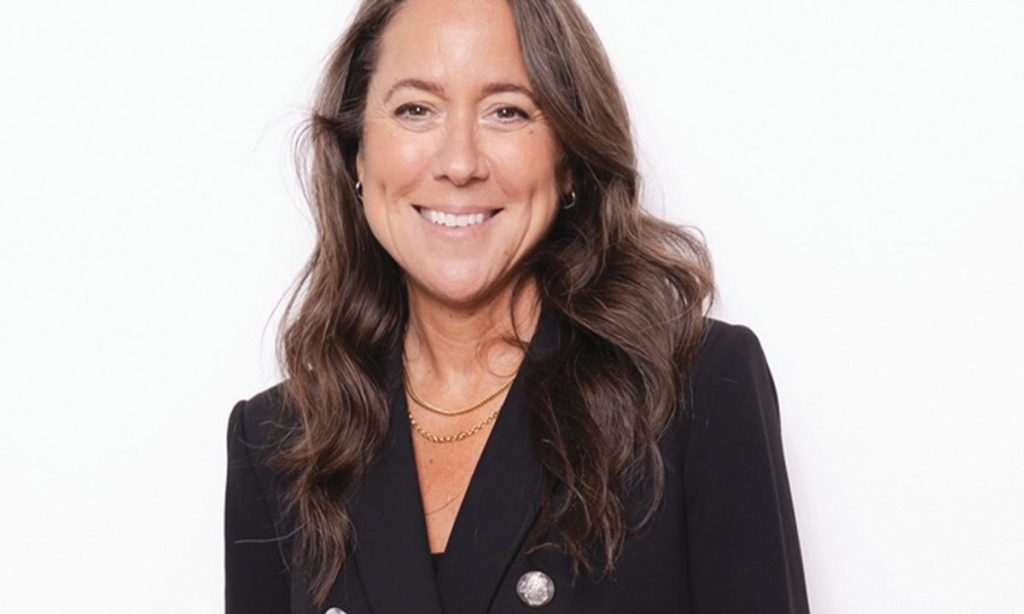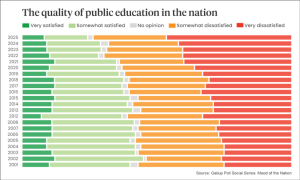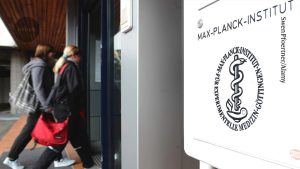When Katherine Fleming left her position as provost at New York University to become the chief executive of the J. Paul Getty Trust in 2022, she did not know a lot about wildfires. She does now. This year she oversaw fire-fighting measures at the Getty Villa (surrounded by the Palisades fire) and a three-week closure at the Getty Center (east of the fire perimeter), while managing a staff of around 1,300. Here, she talks about how she ended up sleeping under her desk in her office, where her sense of empathy as a leader comes from and her goal for the Olympic Games in summer 2028.
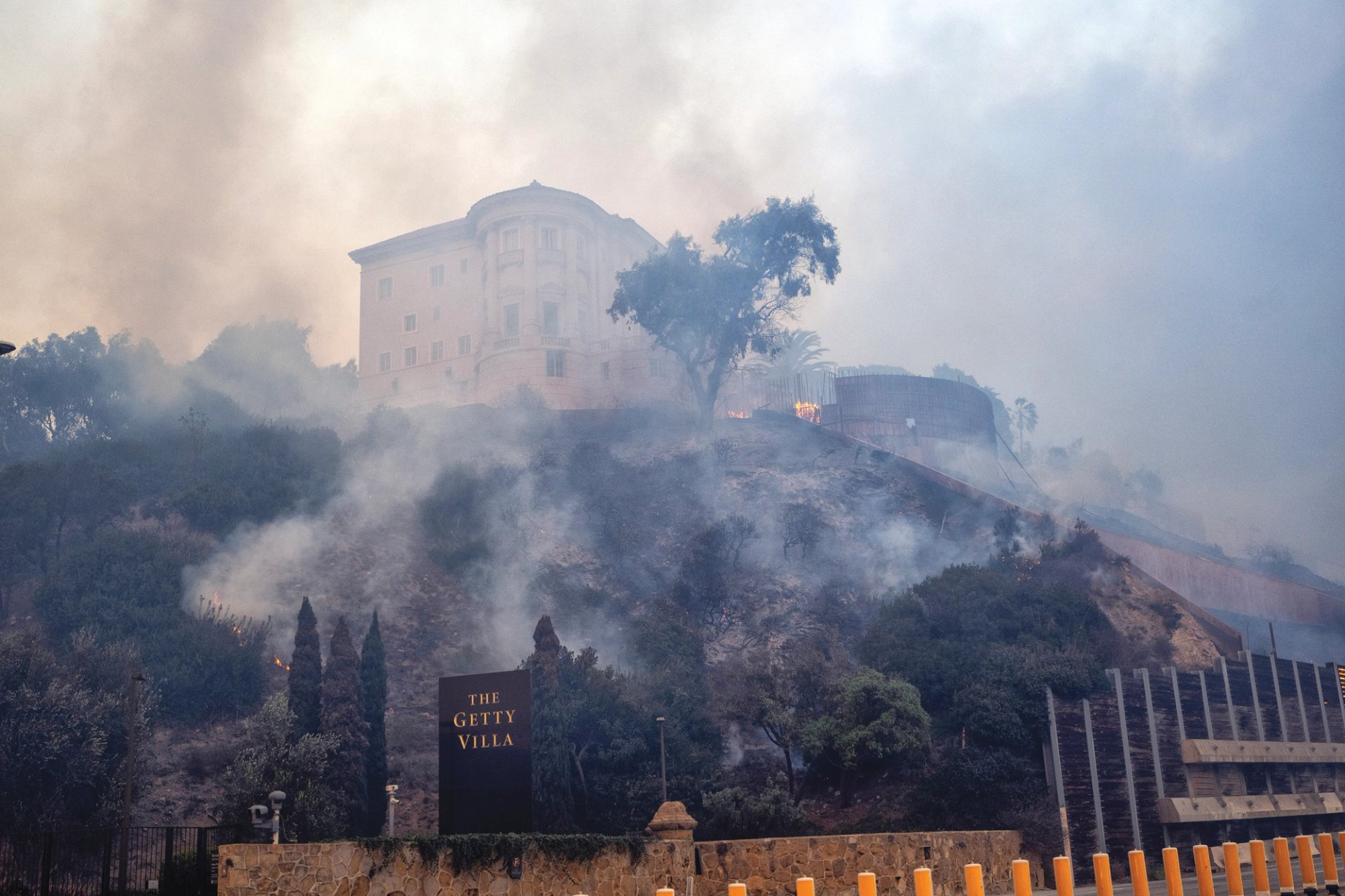
While the Palisades fire encroached on the grounds of the Getty Villa, its buildings were untouched, thanks to the institution’s protective landscaping strategy
Photo by Hans Gutknecht/MediaNews Group/Los Angeles Daily News via Getty Images; © 2025, Los Angeles Daily News/SCNG
The Art Newspaper: Now that the Palisades fire is contained, what can you tell us about any damage to the Getty Villa?
Katherine Fleming: We’re very fortunate in that the damage to the Getty Villa is exclusively found outside of the villa itself, with the grounds most visibly affected. The buildings themselves, and that includes a couple of wooden-roofed structures to the south of the villa and the ranch house to the north, are entirely intact.
You have state-of-the-art air-conditioning systems to seal the buildings from smoke, and first-rate irrigation systems, too. But is there anything that other museums or even homeowners, without a Getty-sized budget, might do to protect themselves from this sort of disaster?
Absolutely. The single most important thing in my view was fuel reduction measures that were taken consistently over the course of years and we doubled down on this past year because of the drought. It means doing things like making sure that you don’t have flammable plants proximate to your buildings, making sure that the canopies of your trees are as elevated as possible—which gives your trees that nice kind of Dr Seuss-y look, where you have a long trunk with a clump of branches up at the top—and trying very hard to think about the sorts of species that you plant in your gardens so that you have plants that retain water and that are very difficult to burn, like acacias and oak trees. Most brutally, it means pulling out some really beautiful trees and plants that look great but just light up like firecrackers if a fire gets near them. These are all things that homeowners can do and that do not require a big budget.
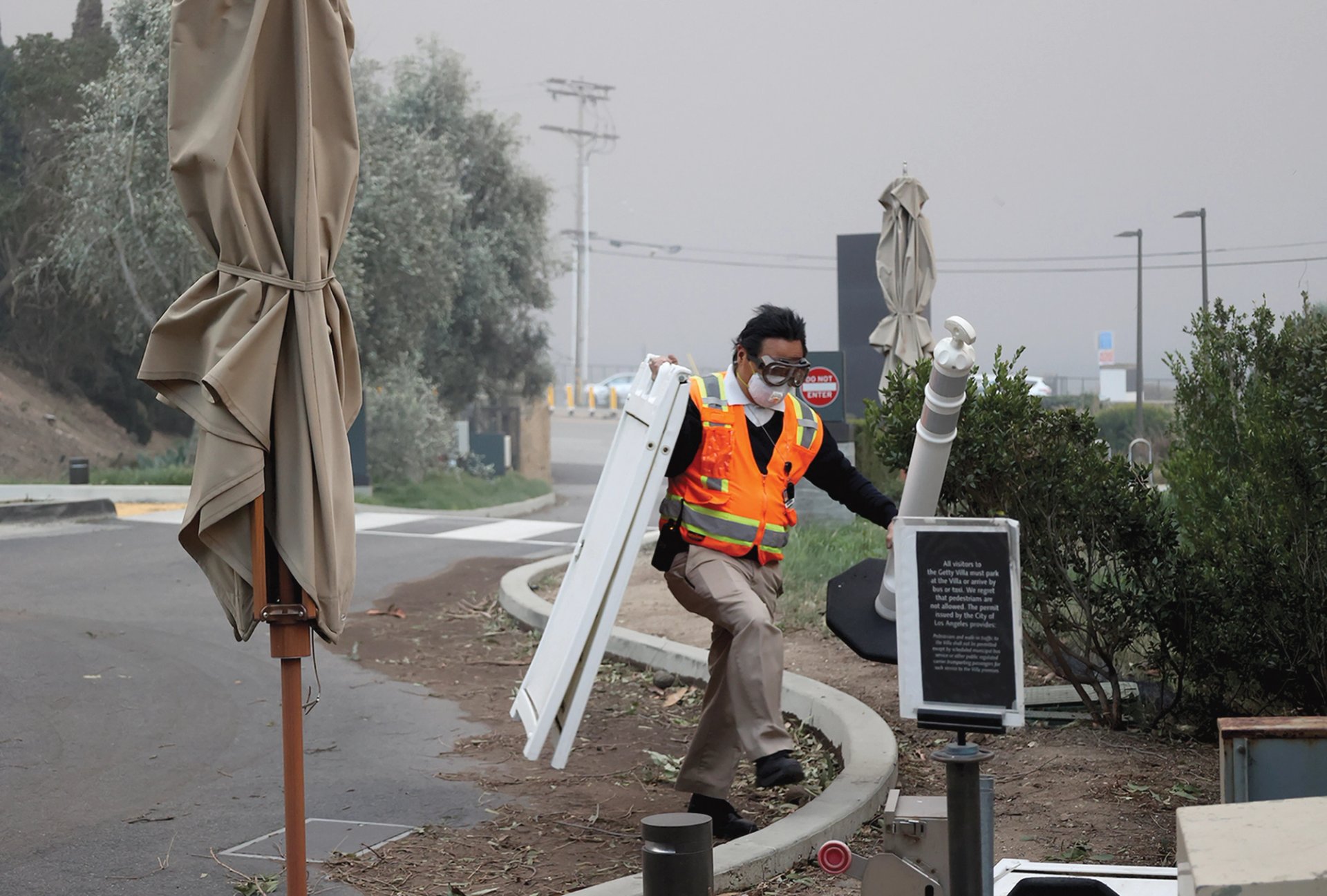
As the Palisades fire took hold, staff at the Getty Villa sprang into action to limit its impact
Don Jones
There is a rumour that you slept at the Getty Center for a week during the worst of the fires.
I did. There are various places at the Getty Center where one can sleep. We have a very small infirmary that has a couple of beds right down the hall from the emergency operations centre, which would not under normal circumstances strike me as a super-comfortable place to sleep. But it is plenty comfortable if you’re really tired. And there was one night when I slept under my desk.
Under your desk?
It seemed like a comfy place where you could turn the lights out, and it was my little zone that I could be in. I also live a three-minute drive away from the Getty Center and discovered pretty speedily that it was much more relaxing to not really be sleeping at the Getty Center than it was to be pretending to be sleeping at my home when my phone kept blowing up.
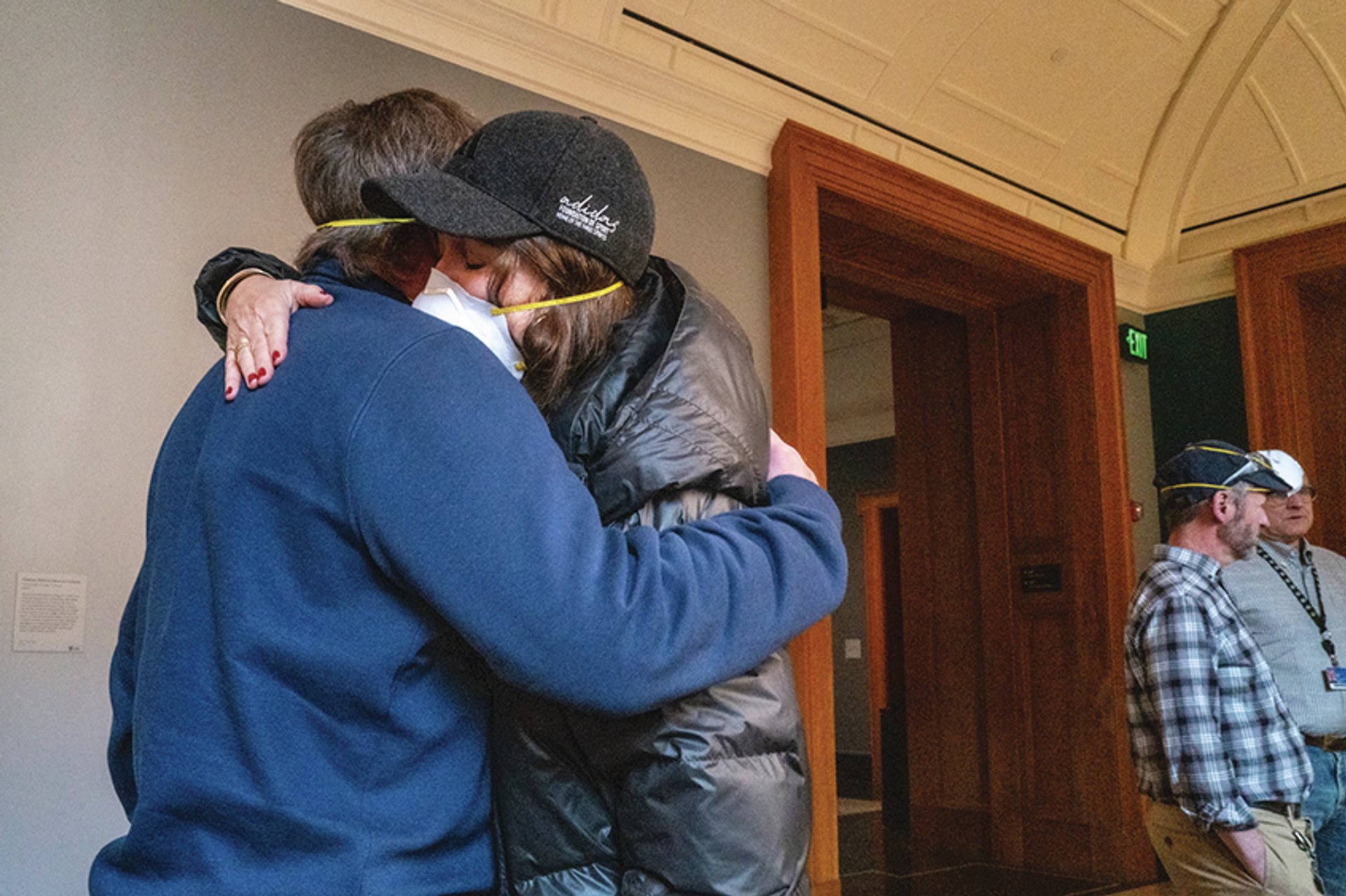
Katherine Fleming supports a colleague at the Getty Villa
Photo: Christopher Sprinkle; © 2025 J. Paul Getty Trust
But why were you sleeping at the Getty in the first place?
Although I don’t have any technical skills to assist during a fire, I feel like if you are the leader of an organisation and the organisation is in the middle of a crisis, what you can do to assist is show complete solidarity with the people who are managing the situation. And the way to do that is to be present. I’m not going to have a bunch of people staying overnight away from their families, potentially putting themselves in danger, really protecting the organisation, and not be there with them myself.
The week after the fires started, you announced a $12m relief fund for artists and cultural workers, in partnership with multiple foundations and patrons. The Getty in the past has moved at a more glacial pace. Why did you move so quickly on this one?
It’s important because we knew that there were people who had immediate need. People overnight—or in the course of an hour—lost their livelihoods, their homes, their studios. Artists lost the tools that are essential to being able to do their work. And even though some of those people—by no means all of them—were insured or have the capacity over the long haul to figure out how to dig their ways out, we knew we needed to get something in place as swiftly as possible to meet that very immediate need with as little bureaucracy or red tape as possible.
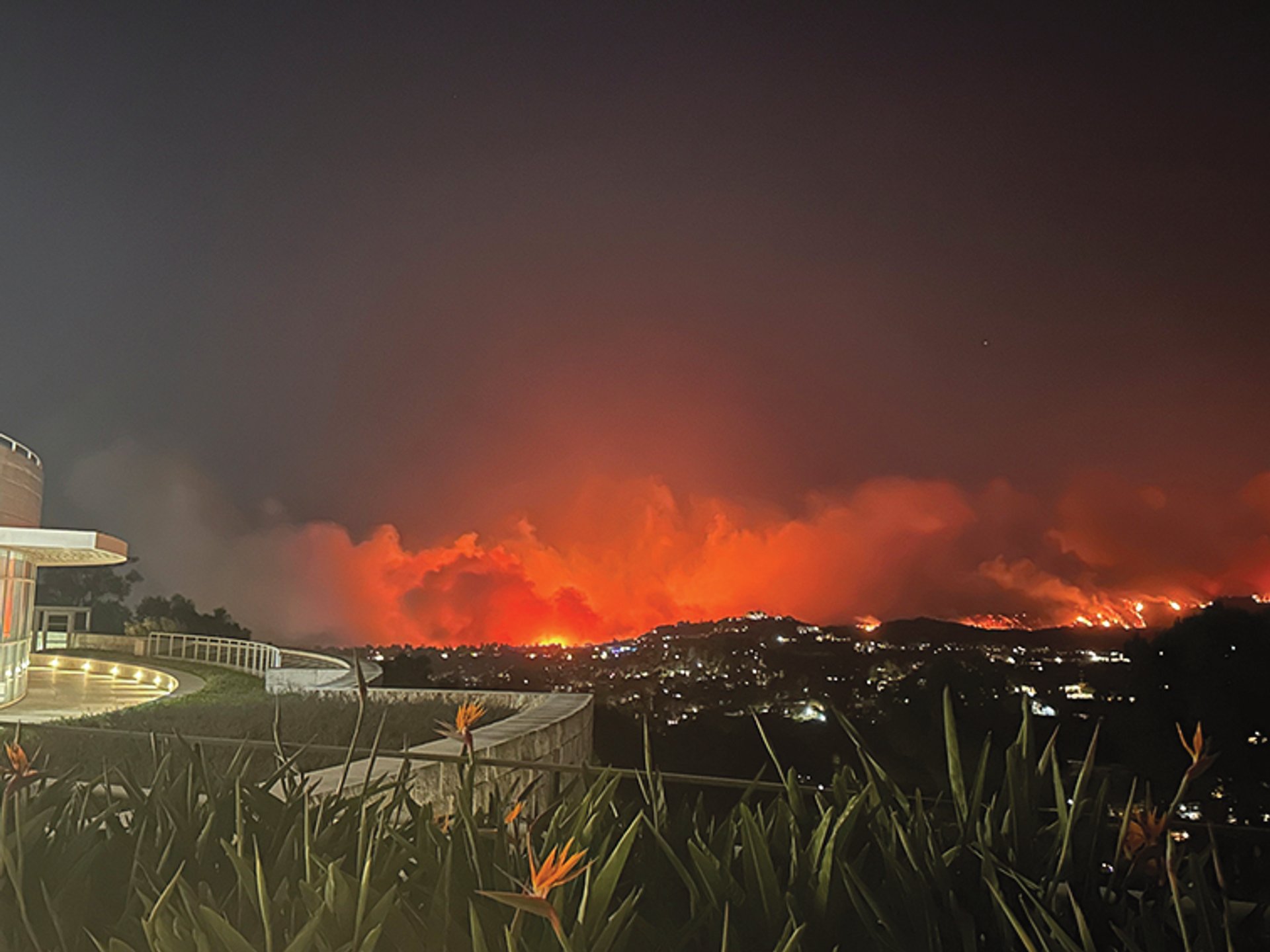
The raging fires could be seen from the Getty Center, whose design incorporates a range of state-of-the-art fireproof features
Courtesy The Getty Center
Do you think that that sort of empathy comes from your experience of being a mother or a woman working in male-dominated circles?
I don’t know whether there’s a gendered dimension to it. I certainly feel enormous empathy for these people who have lost everything. I also know what it is to have to slog your way through a ton of bureaucracy. I have a spouse who has had cancer for a decade. And, boy, I can tell you the amount of bureaucracy that you go through; dealing with that is exhausting and overwhelming. So, I do have some experience in what it is to, on the one hand, be emotionally confronted with a frightening situation and, on the other, be confronted with all the dreck that goes along with trying to manage it from a bureaucratic standpoint.
Looking ahead, what would you say is the biggest challenge the Getty is facing in the next couple of years?
Internally, we’re looking at a number of really important capital projects, from overhauling the tram to completely rethinking our decorative arts pavilions, reworking our energy facility, thinking about our scholars housing. That starts to look a lot like a capital plan, which is challenging but not in a negative way; it’s also super-invigorating. It’s the most important set of capital projects that the organisation has embarked upon since the centre was built over 25 years ago. And then we also have the World Cup and Olympics coming our way [in 2026 and 2028 respectively].
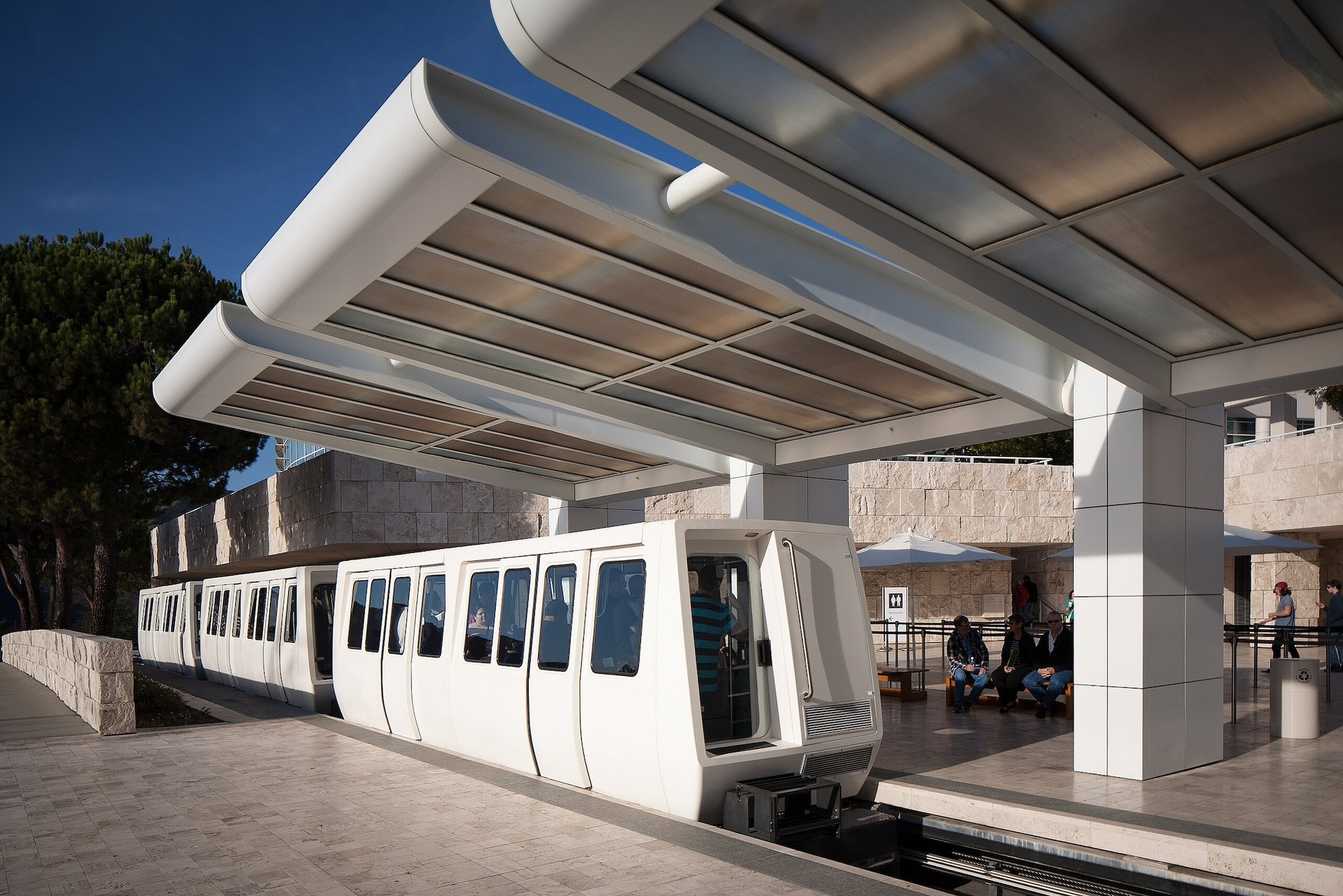
The Getty Center tram Photo by ChristianSchd, via Wikimedia Commons
Do you have any plans for involvement in either one?
We’ll be involved in both, but we need to think in very deliberate ways about what that actually means. I’m really interested in, corny as it sounds, helping the city of Los Angeles shine. I think everyone is looking at Paris [during the 2024 Summer Olympics] and saying: Wow, that’s gonna be a really tough act to follow.
Among locals the Getty has had this rap for being this elitist institution high up on the hill. Can you talk about what you’ve been doing to combat that stereotype?
We are undertaking a major project connected to the visitor experience, designed precisely to address that sort of vibe, which I think in some instances is unfairly earned. For example, we are currently reworking what the Spanish steps [at the tram drop-off] are available for. Maybe they could be available for something other than having railings around them and people being told that they’re not allowed to sit on them.
Your background academically is ancient Greece or Hellenic studies.
Wrong, wrong, wrong, wrong. It’s modern Greece: I work on the period from 1750 on, and I’m particularly interested in what’s called reception theory, meaning the ways in which classical antiquity is deployed in the creation of a modern Greek identity.
My mistake! How did you end up in this field?
Oh, I could give you the real answer and the fake answer. The real answer is that I dropped out of college when I was a sophomore so that I could, on the spur of the moment, accept a job as a waitress in a taverna in Southwestern Crete. And as a result of that, I learned Greek and became very attached to Greece and built an entire scholarly career around the fact that it was a place of which I had knowledge and to which I had great access.
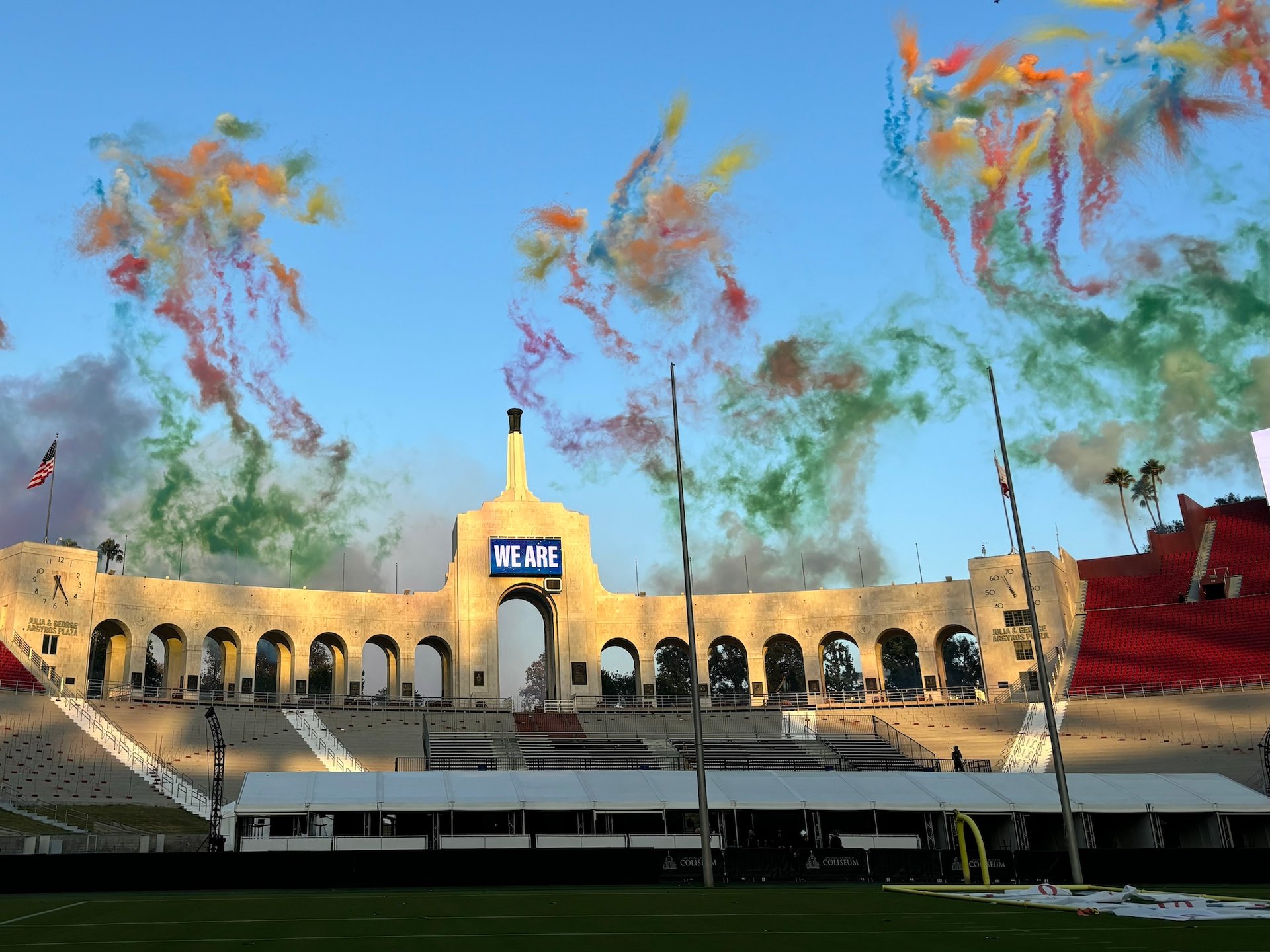
Colourful bird-of-paradise flowers seen above the Los Angeles Coliseum during WE ARE, which artist Cai Guo-Qiang’s called his “gift to Los Angeles”
Photo: © Jori Finkel
PST Art last autumn got off to a rough start with the opening event, the Cai Guo Qiang fireworks, where some spectators were injured by debris and others were totally rattled by the noise and smoke. What was your experience of the night?
I thought the night was pretty mind-blowing—parts were astonishingly beautiful to look at. It was much louder than I had anticipated—I had not anticipated it being as noisy as it was.
But the only warnings the Getty gave visitors in advance focused on protecting the football field where spectators stood. Don’t wear high heels, don’t damage the turf.
Look, we were told to give those warnings by the venue [the Los Angeles Coliseum], and I think the venue was particularly worried about the turf.
Did you see anyone who was injured?
There was someone proximate to me at the end of it who I could see looked distressed. In the same way that I would on the street, if I saw someone who looked like they were in a bad situation, I just went over to make sure that they were OK. They looked cold, so I gave them my shawl. I identified myself, gave them my email and told them to reach out to me if I could be of any help. They didn’t wind up reaching out to me.
Have there been any lawsuits or settlements as a result of the injuries?
I can’t comment on that.
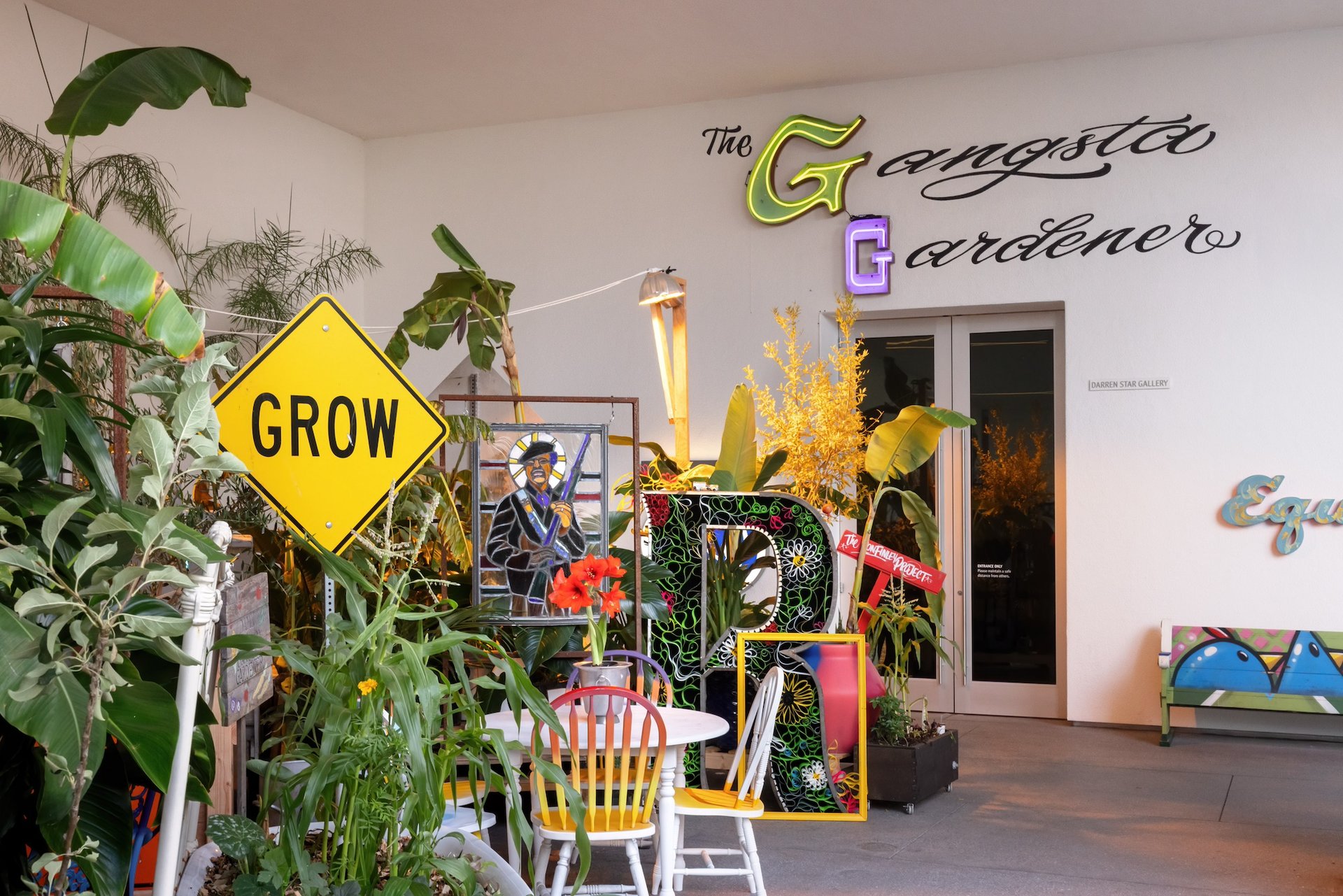
Installation view of Breath(e): Toward Climate and Social Justice, at the Hammer Museum, Los Angeles Photo: Sarah Golonka.
Did you find any PST Art shows especially powerful or memorable?
I found Breath(e) at the Hammer very moving. I love that in its totality it was indoor-outdoor, it involved the living world, and it managed to convey the urgency and beauty of all that is being lost in the current moment of [climate] crisis while still being gorgeous, calming and utterly lacking in hysteria. I also have to say, not simply because it was a Getty show, I found Lumen to be absolutely fascinating. I’m a scholar of comparative religion and it was a show that drew heavily on Judaism, Christianity and Islam, so it had some inherent interest for me. But I also thought that the juxtaposition of contemporary with historical pieces was just astonishing.
The next PST Art is set for 2030. Have you decided on a theme for that yet?
Not yet, because we still aren’t done with this PST. We’re going to let it wind down and then take a look at what we thought really worked and what didn’t. One of the things that’s really striking about this iteration of PST is how many of the shows were dealing with Indigenous knowledge, sustainability and the plant world around us—dystopic and utopic futures. These shows speak directly to what we’ve been living through in Los Angeles.



